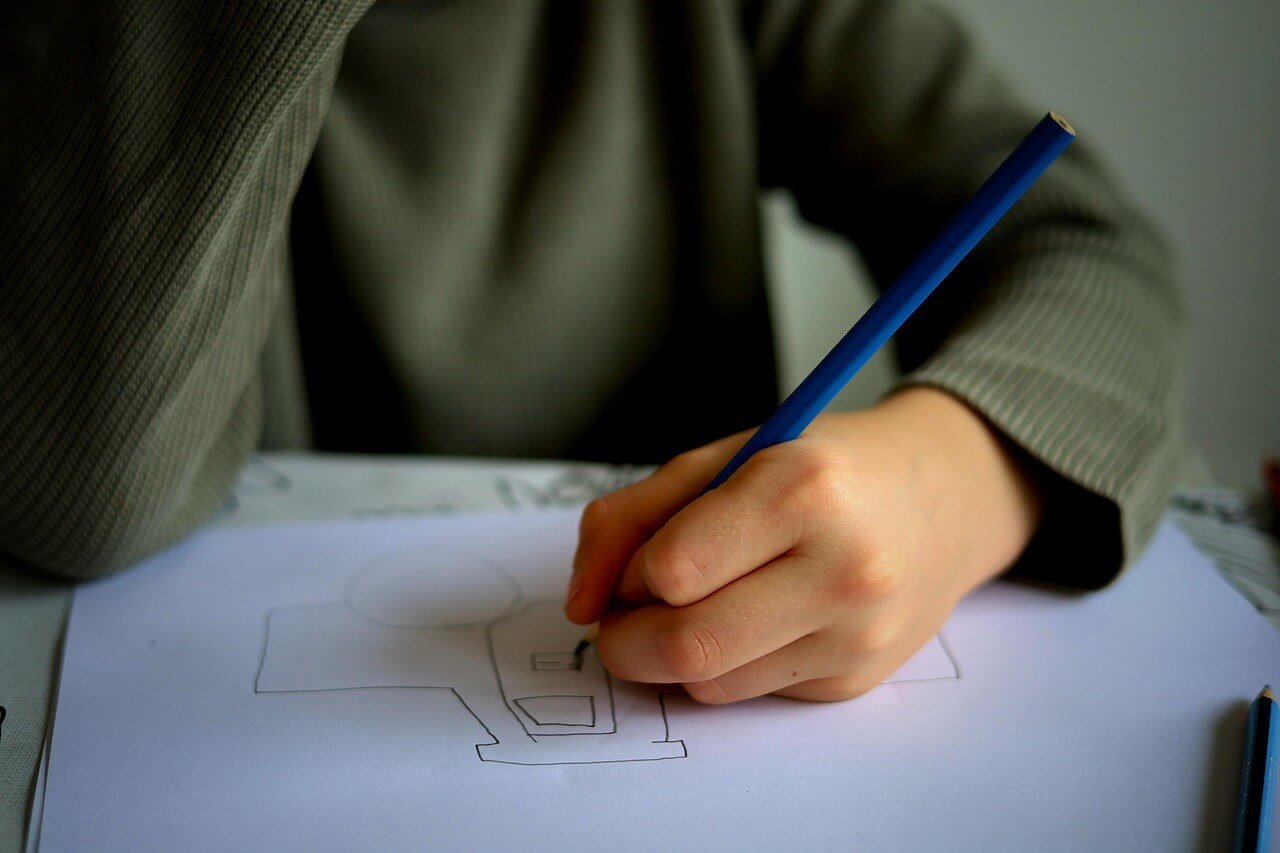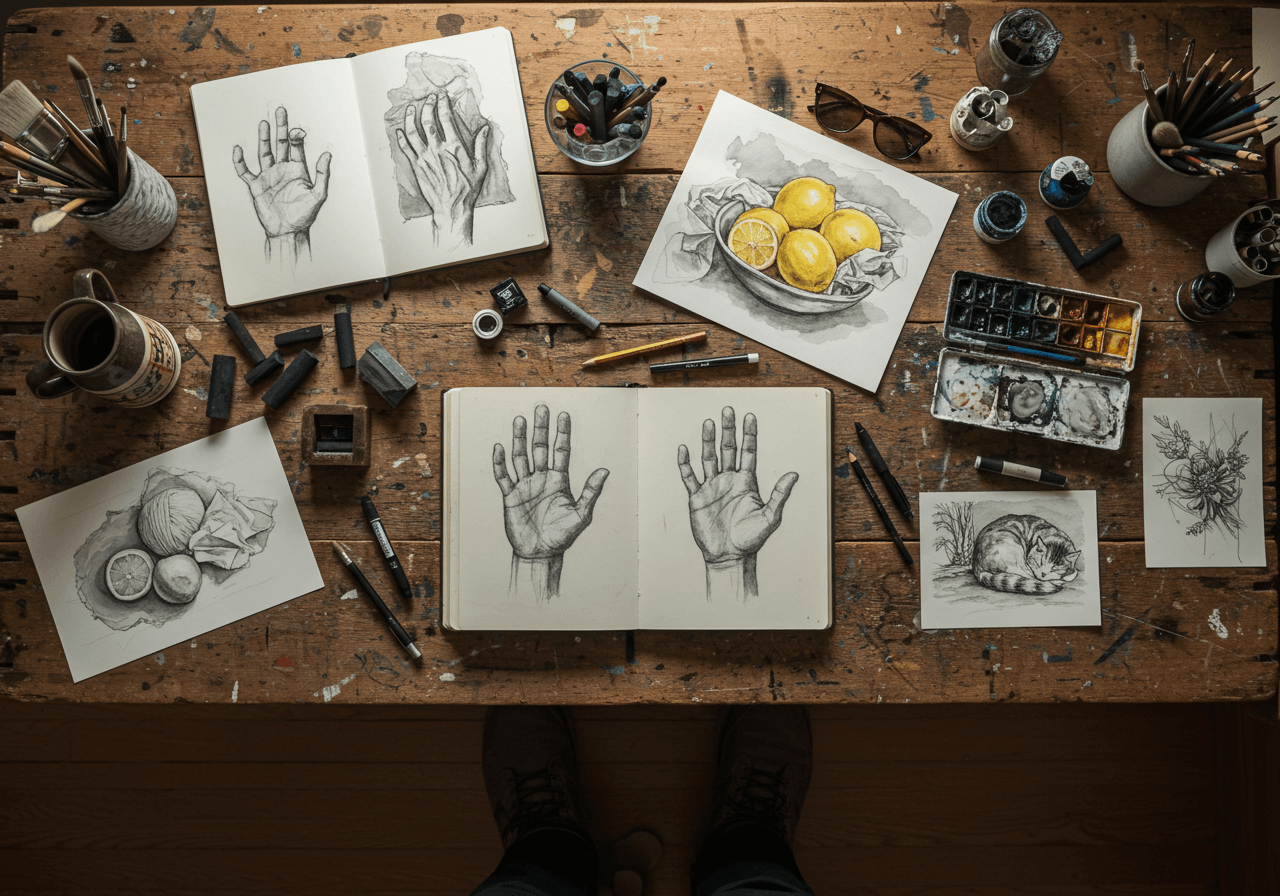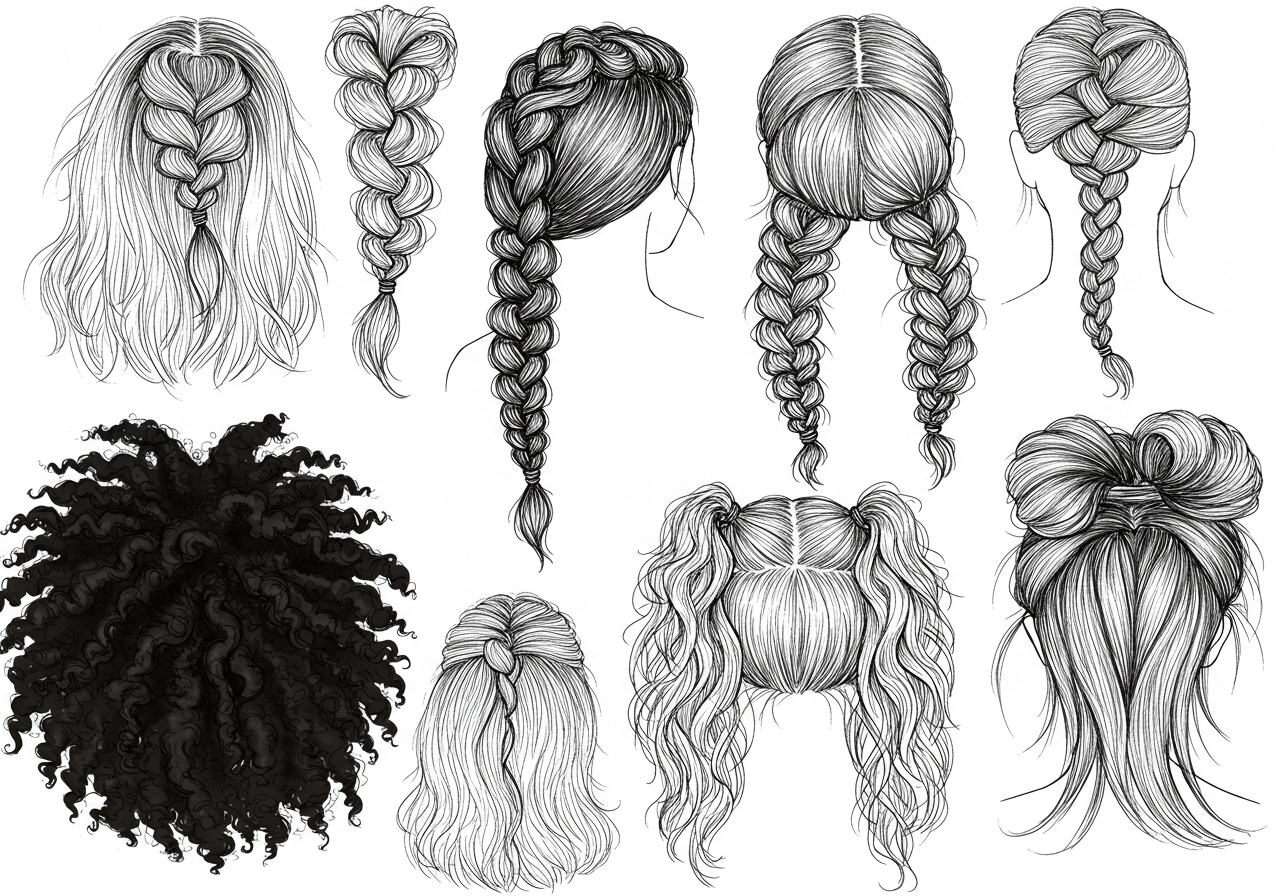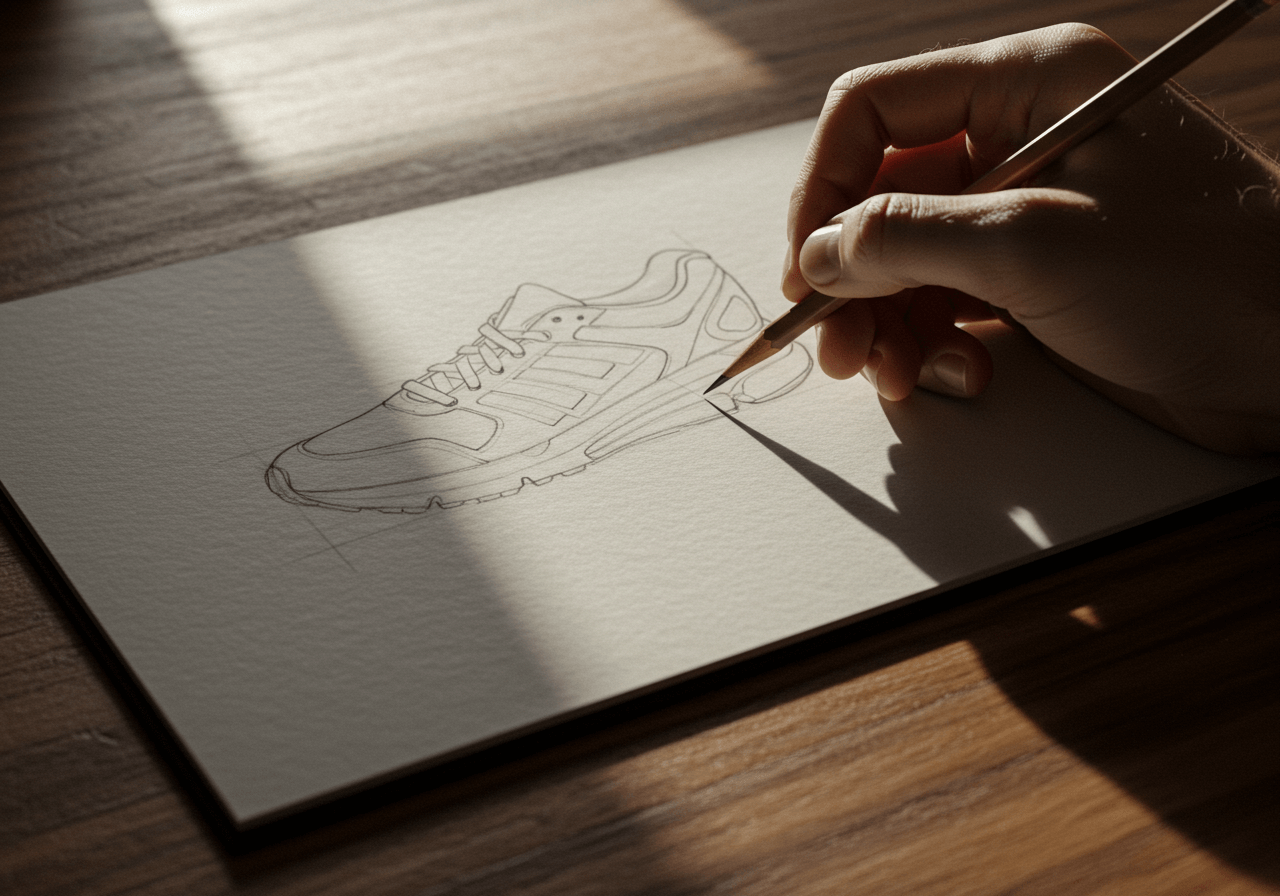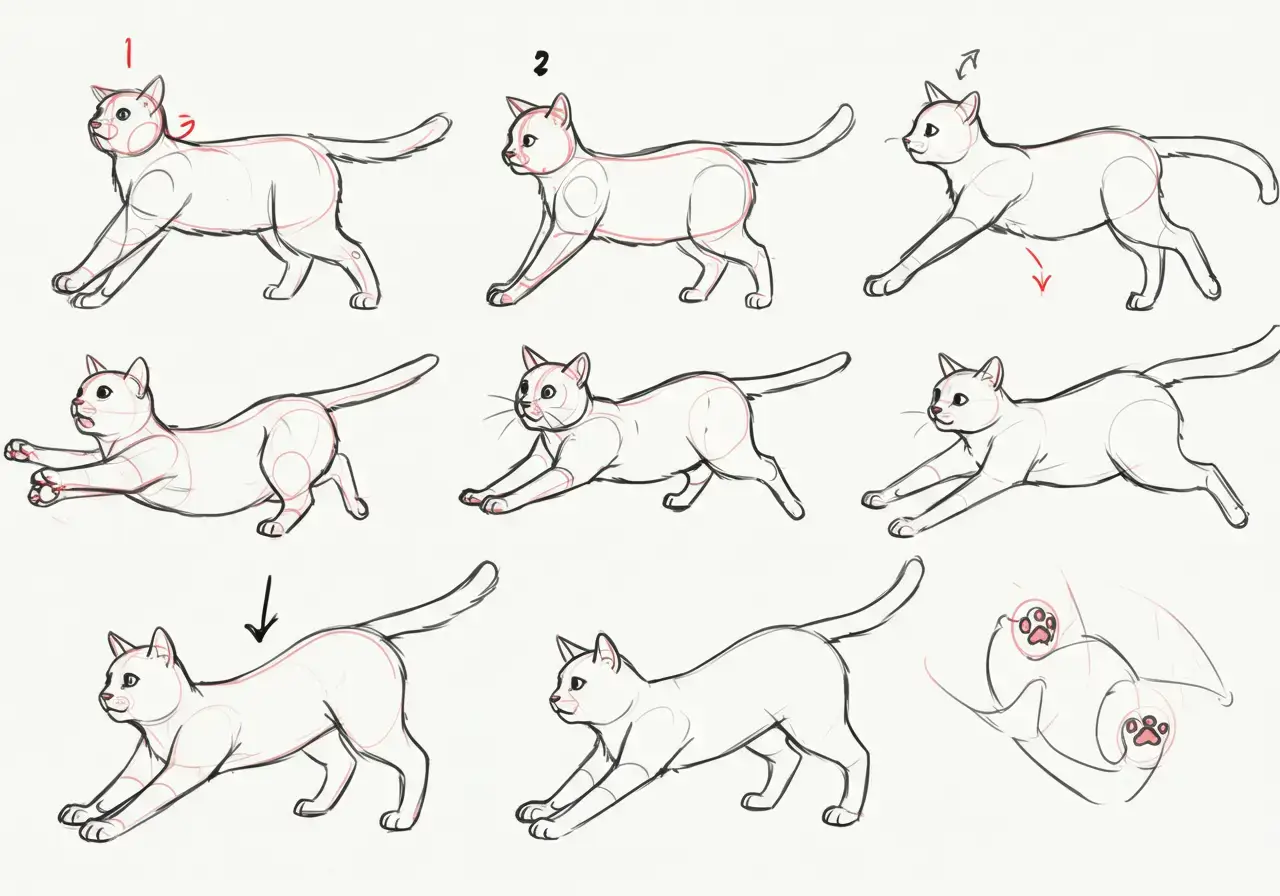How to Draw a Dragon: Your Easy Guide to Unleashing Fantasy!
Ever dreamt of bringing a majestic, fire-breathing beast to life on paper? Well, guess what, you totally can! Dive into this dragon drawing tutorial and discover the secrets to sketching these legendary creatures. Whether you’re a complete newbie or just looking to sharpen your scales (pun intended!), this guide is like having a friendly art buddy right beside you. Forget those intimidating art school rules – we’re going to make this fun, approachable, and super rewarding. So grab your pencils, maybe a snack, and let’s get started on your very own fantasy creature sketch journey! We’ll be breaking down how to draw dragons step by step so smoothly, you’ll be amazed at what you can create.
Why Dragons, Though? The Enduring Appeal of Scaled Legends
Seriously, who doesn’t love dragons? From ancient myths to modern blockbusters, these magnificent beasts have captivated our imaginations for centuries. They represent power, wisdom, danger, and mystery all rolled into one glorious package. Think about it: a creature that can fly, breathe fire, and sometimes even talk? Pure awesomeness! For artists, dragons offer an incredible playground for creativity. Their diverse forms – from the sleek, serpentine Asian dragons to the bulky, armored European beasts – mean there’s literally no limit to what you can conjure. This isn’t just about drawing; it’s about tapping into a rich vein of storytelling and unleashing your inner myth-maker. Plus, mastering a dragon drawing tutorial opens up a whole world of possibilities for illustrating your own fantastical tales.
Gear Up! What You’ll Need for Your Dragon Adventures
Alright, before we get our hands dirty (or delightfully smudged with graphite), let’s talk tools. Don’t worry, you don’t need a fancy art studio. Just a few basics will do the trick:
| Tool | Why You Need It | Pro Tip! |
|---|---|---|
| Pencils | Different hardnesses (HB for sketching, 2B-4B for shading). | Start with a trusty HB for light outlines, then switch to softer leads for depth. |
| Eraser | A good-quality kneaded eraser is a lifesaver for gentle corrections. | A kneaded eraser can also lift graphite without tearing paper – magic! |
| Paper | Sketchbook, printer paper, anything that holds pencil well. | Thicker paper (like Bristol board) endures more erasing and layering. |
| Sharpener | Keep those points sharp for precise lines! | A small manual sharpener is perfect for on-the-go sketching. |
| Reference Images | Look at real animals (lizards, birds, bats) and other dragon art. | Don’t just copy! Study how different parts move and combine them creatively. |
| Optional: | Blending stump, tortillon, colored pencils, ink pens. | These can add awesome texture and final touches once you’re comfortable with the basics. |
Honestly, the most important thing is just to have fun. Don’t get bogged down by having the “perfect” tools. Your creativity is the real superpower here!
Anatomy 101: Understanding Your Dragon’s Bones (and Scales!)
Want to draw a dragon that looks believable, even if it’s fantastical? Then we need to peek under its skin (or scales, rather!). Understanding basic anatomy, even if simplified, makes a huge difference. Think of it like this:
- Skeletal Structure: Dragons, despite their magical nature, share some commonalities with real animals. They have a spine, rib cage, limbs, and a skull. Start with simple shapes – circles for joints, ovals for muscles, and a curved line for the spine. This is your blueprint.
- Muscles & Form: Once your skeleton is roughed in, start building up the “meat.” Think about where muscles would bulge (like the chest, thighs) and where tendons would be visible (ankles, wrists). This adds weight and realism.
- Wings: This is where things get really cool! Most dragons sport bat-like wings or feathered bird-like wings.
- Bat-like: Imagine an elongated hand with membranes stretched between the “fingers.” The wing structure attaches firmly to the shoulder and usually has a strong primary bone that connects to the body.
- Bird-like: Strong, broad shoulders and a powerful, feathered structure. The mechanics are similar to a bird’s wing, just magnified!
- Heads & Snouts: This is where personality shines! Some dragons have long, serpentine snouts, others are more compact and powerful. Think about the placement of eyes, nostrils, and formidable teeth. Horns, frills, and crests add character.
- Tails: Often overlooked, but a dragon’s tail is a fantastic tool for balance, steering, and, let’s be honest, swiping at foes! Decide if it’s long and whip-like, or short and sturdy.
Key Insight: Don’t be afraid to pull inspiration from real-world animals! A lizard’s scales, an eagle’s talons, a bat’s wings – they all offer incredible reference points for your fantasy creature sketch.
The Core Dragon Drawing Tutorial: How to Draw Dragons Step by Step!
Alright, buckle up! This is the main event. We’re going to break down how to draw dragons step by step into manageable, easy-to-follow stages. Remember, practice makes perfect, and every artist starts somewhere.
Step 1: The Blueprint – Basic Shapes & Gesture
Think of this as building blocks. No need for perfection, just loose, light lines.
- Head: Start with an oval or circle for the head.
- Neck: A curved line extending from the head.
- Torso: A larger oval or bean shape for the body.
- Hips: Another oval behind the torso for the hindquarters.
- Limbs: Simple lines for legs and arms, marking where joints would be with small circles.
- Tail: A long, flowing curve originating from the spine.
- Wings: Light, swooping lines to establish their general position and size.
- Pro-Tip: Keep these lines super light. You’ll be erasing a lot! This stage is all about capturing the dragon’s pose and flow.
Step 2: Refining the Form – Adding the Mass
Now, connect those basic shapes and start giving your dragon some volume.
- Outline the Body: Connect the head, neck, torso, and hips with smoother, more organic curves. Think about where muscles would be.
- Develop Limbs: Thicken the stick figures into cylindrical or conical forms. Pay attention to joints – elbows, knees, wrists, ankles.
- Define the Head: Start shaping the snout, jawline, and eye sockets. Is your dragon fierce? Regal? Sneaky? Let it show!
- Flesh out Wings: For bat wings, draw the main arm bones extending from the shoulders, then sketch the “fingers” and the connecting membrane. For feathered wings, indicate the major feather groups.
- Analogy: Imagine you’re sculpting clay. You’re adding bulk and general shape before getting to the tiny details.
Step 3: Detailing Time! Scales, Claws, & Character
This is where your dragon really starts to come alive.
- Face First: Refine the eyes (they’re windows to the soul, even a dragon’s!), nostrils, and mouth. Add teeth, horns, or crests.
- Scales/Skin Texture: This is vital for a convincing fantasy creature sketch.
- Scales: Don’t draw every single scale unless you want to go mad! Instead, draw clusters of scales to suggest texture, especially along the spine, limbs, and face. Overlapping scales look more natural.
- Skin: If your dragon is smooth-skinned (like some eastern dragons), focus on muscle definition and subtle wrinkles around joints.
- Claws & Talons: Make them sharp! Imagine if they could grip onto rock or prey.
- Wing Membranes/Feathers: Add detail to the wing structure. For membranes, draw subtle veins or folds. For feathers, imply layers and individual feather shafts.
- Tail Details: Add spikes, fins, or a club-like end if your design calls for it.
- SEO Insight: Remember, integrating the primary keyword “dragon drawing tutorial” here reinforces the user’s intent to learn practical drawing steps.
Step 4: Shading & Lighting – Giving it Depth
Flat dragons are sad dragons! Shading adds dimension and makes your drawing pop.
- Light Source: Decide where your imaginary light source is coming from. This is crucial!
- Cast Shadows: Areas facing away from the light will be darker. Think about how the light would hit your dragon’s form and where shadows would be cast (e.g., under the chin, beneath the wings, on the underside of the belly).
- Form Shadows: Use cross-hatching, stippling, or smooth blending to build up shading. Go light at first, then gradually darken.
- Highlights: Leave some areas untouched or lightly erased to represent the brightest points where light hits directly. This creates a sense of shine, especially on scales.
- Friendly Advice: Don’t rush shading. It’s a meditative process that truly elevates your dragon drawing tutorial efforts. Think about the texture – rough scales will have different shading patterns than smooth skin.
Step 5: Final Touches & Dynamic Background (Optional but Awesome!)
- Clean Up: Erase any lingering guideline marks.
- Defining Lines: Go over your main outlines with a slightly darker pencil or even an ink pen to make your dragon stand out.
- Atmosphere: A simple background can enhance your dragon. A misty mountain peak, a swirling cloud formation, or a jagged rock face helps tell a story. Don’t let the background compete with your dragon; it should complement it.
- Personalize: Add any unique markings, scars, or magical glows to truly make this your dragon.
- Remember: The goal of learning how to draw dragons step by step isn’t just to copy; it’s to develop your own unique style.
Mastering the Art of Scales: Texturing for Realism
Scales are probably one of the most iconic (and intimidating!) features of a dragon. But don’t fret, we’ve got some tricks up our sleeve to make them look fantastic without driving you crazy.
- Varying Size & Shape: Not all scales are created equal! Think about where on the body they are. Larger, flatter scales on the belly for protection, smaller, more intricate ones around the eyes for flexibility, and sharp, ridge-like scales along the spine for intimidation.
- Overlapping: This is key! Scales rarely sit perfectly side-by-side. They usually overlap slightly, like roof shingles. This creates depth and makes them look organic.
- Highlighting & Shadowing: Each scale acts like a tiny facet. Think about where the light hits the edge of a scale, creating a highlight, and where the shadow falls beneath the overlapping edge. This is what truly gives them that 3D look.
- Pattern, Not Grid: Instead of drawing individual perfect scales in a neat grid, think about the overall pattern. Draw some defining scales, then imply the rest with lines and shading. Use a dotted or C-shaped line to signify a group of scales without drawing each one.
- Texture Brushes (Digital): If you’re going digital, this is a game-changer! Many art programs offer custom brushes that can quickly add scale texture.
Data Insight: Research indicates that artists who focus on organic, flowing scale patterns over rigid grids achieve higher visual engagement and realism in their dragon drawing tutorial attempts.
Breathing Life into Your Beast: Expressing Emotion & Movement
A dragon isn’t just a static creature; it’s a dynamic force of nature! Giving it personality really brings it to life.
- Expressions: Eyes are everything! Slit pupils can convey menace, wide pupils show surprise, and narrowed eyes suggest cunning. Brow ridges can give an angry or wise look. A snarling snout reveals its ferocity.
- Pose & Gesture: The way your dragon holds its body speaks volumes.
- Coiled: Suggests power held in reserve, ready to strike.
- Mid-flight: Dynamic, showcasing the power of its wings.
- Resting: A more serene, thoughtful pose (but still ready!).
- Attacking: Aggressive, forward-leaning, with claws extended.
- Impact of Environment: Is your dragon perched on a craggy cliff, blending with smoky mountains, or silhouetted against a full moon? The setting adds context and drama.
Personalization Tip: Think about your favorite dragon stories or myths. What emotions do those dragons evoke? Try to channel that into your own fantasy creature sketch.
Common Pitfalls (and How to Dragon-Proof Your Art!)
Even seasoned artists stumble sometimes. Here are a few common mistakes and how to avoid them on your dragon drawing tutorial journey:
- Stiff Poses: Avoid drawing your dragon standing perfectly symmetrically like it’s posing for a mugshot. Use dynamic curves and varied angles.
- Flatness: Lack of shading and relying only on outlines makes dragons look like cardboard cutouts. Remember those light sources and shadows!
- Disproportionate Limbs/Wings: Check your anatomy! Are the wings large enough to actually lift that body? Are the legs strong enough to support it?
- Ignoring References: While you want your dragon to be unique, references to real animals or other dragon art are crucial for understanding form and texture. Don’t copy, but learn from them.
- Over-detailing Too Soon: Don’t start drawing individual scales before you’ve got the basic form right. It’s like trying to put icing on a cake that hasn’t been baked yet!
Unleash Your Inner Dragon — And Keep Drawing!
So, there you have it! Your ultimate dragon drawing tutorial to get you soaring. Remember, drawing is a skill, and like any skill, it gets better with practice. Don’t be afraid to experiment, make “mistakes” (they’re just learning opportunities!), and most importantly, have fun. Every line you draw, every scale you render, brings you closer to mastering the magnificent art of the fantasy creature sketch. Keep practicing how to draw dragons step by step and watch your skills (and your dragon hoard!) grow.
For more drawing adventures, check out these related topics:
- [Link to ‘Drawing Mythical Beasts: Gryphons and Hydras’]
- [Link to ‘Mastering Dynamic Poses in Your Artwork’]
- [Link to ‘Understanding Light and Shadow for Artists’]
FAQ: Dragon Drawing Delights!
Here are some burning questions aspiring dragon artists often ask:
Q1: How do I make my dragon look unique and not just like everyone else’s?
A1: Great question! The key to uniqueness lies in blending inspiration with your own flair. Start by studying various dragon types – Asian, European, even modern interpretations. Then, experiment with combining features. What if your dragon has bat-like wings but a snake-like body? Or bioluminescent scales? Consider its environment: is it an ice dragon with crystalline horns, or a desert dweller with sand-worn armor? Personalize its “story” – scars, battle damage, ancient trinkets – these subtle details make your dragon truly one of a kind. Don’t just draw a dragon; draw your dragon.
Q2: I can draw a decent dragon, but it always looks a bit stiff. How can I add more dynamism and movement?
A2: Stiffness usually comes from drawing with straight lines or rigid symmetry. To inject dynamism, think about the “line of action” first. This is a single, flowing curve that defines the overall motion or pose of your dragon. For example, if it’s flying, the line of action might be a majestic S-curve. If it’s about to strike, it might be a coiled spring. Exaggerate poses slightly, utilize foreshortening (where parts of the body appear shorter because they’re closer to the viewer), and pay attention to overlapping elements – a leg in front of a wing, a head slightly turned. And crucially, don’t be afraid to break symmetry! A dragon in motion will rarely be perfectly balanced.
Q3: What’s the best way to get inspiration if I’m feeling stuck or my dragons all look the same?
A3: Art block is real, even for dragon masters! When you’re feeling uninspired, step away from dragons for a bit. Look at real-world animals: crocodiles, bats, birds of prey, lizards, even insects. Study their anatomy, scales, skin textures, and musculature. Notice how their limbs bend, how their wings fold, or how their eyes express emotion. Then, return to your dragon sketchpad with fresh eyes and try to incorporate elements you found interesting. Look at nature documentaries, visit a zoo (with a sketchbook in hand!), or even just browse art books. Sometimes, a completely unrelated visual can spark that perfect dragon idea.
Q4: How do I decide on a specific “type” of dragon to draw?
A4: Ah, the glorious diversity of dragons! This is where you can really have fun. Think about the characteristics you find most exciting. Do you love the elegant, serpentine forms of Eastern dragons, often associated with wisdom and water? Or are you drawn to the powerful, often quadrupedal, fire-breathing Western dragons, embodying strength and danger? Perhaps you prefer something entirely new, like an elemental dragon (stone, ice, storm), or one adapted to a specific habitat (underwater, volcanic, forest). Start by sketching rough silhouettes of different body types and wing structures, then choose the one that sparks the most creative joy. Your choice often reflects the story you want your dragon to tell.
Q5: My scales look flat and repetitive. Any tips to make them more textured and varied?
A5: Flat scales are a common hurdle! Instead of drawing uniform, individual scales like bricks on a wall, try these tricks:
- Vary Size and Shape: Scales aren’t just one size. They’re usually smaller and denser on flexible areas (neck, joints) and larger, more plate-like on protective areas (chest, belly). Mix in some spiky, elongated, or rounded scales.
- Overlapping: This is crucial. Imagine fish scales or shingles on a roof. Each scale slightly covers the one below it. This instantly adds depth.
- Use Light & Shadow: Treat each scale as a tiny form. If the light comes from above, the top edge of each scale will be brighter, and a tiny shadow will fall underneath its overlap, creating a natural illusion of texture.
- Implied Detail: Don’t draw every single scale. Draw a few detailed scales, then use patterns of lines, dots, or subtle shading to suggest the presence of many more scales without rendering each one individually. This is especially effective on large areas like the belly or tail.
- Directional Scales: Scales often follow the musculature or flow of the body. Draw them curving along contours rather than in a straight grid.

